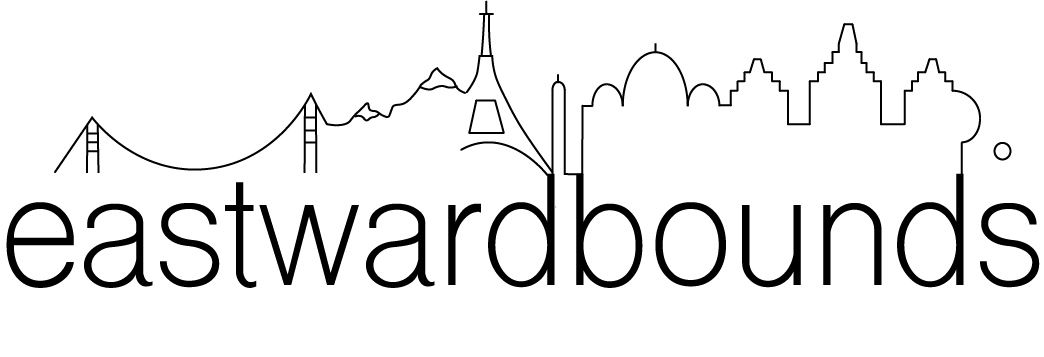How We Booked $89 Flights to Europe
Flights can be immensely frustrating. They're usually the start to a big trip and can make or break the budget. There's no easy, one stop shop to finding the best deals, but there are some practices that make it a whole lot easier. We'll use the $89 tickets we recently booked from the US to the UK as an example, but the same idea applies for a lot of long haul flights. And if a little effort can get you that much closer to the other side of the globe, we say go for it. We don't use any crazy tools or paid services, just a trusty set of steps and a lot of informed guesses.
1. Start EarlY
We recommend starting to look 4-6 months out for international flights and 2-3 months out for domestic flights (earlier if you're looking around a holiday). If you can't commit, you can't commit, but this is the number one way we get great deals on flights.
2. list major cities around your origin
It's easy to get stuck searching for tickets leaving from the one airport closest to your house. And while this makes sense for a lot of domestic travel, it can make a huge difference in cost internationally. For instance, we knew that we'd be heading to Europe from Pittsburgh, PA. However, a quick search on Google flights (our preferred search engine for the first round of ticket hunting) to the UK was pretty discouraging:
Some of the flights were crazy expensive (like $850!!) and some were as cheap as $220. Plus Google kindly alerted us that if we could change our dates, we could snag a seat for as little as $157. However, it seemed wise to expand our search. With a quick glance at the map, we found the biggest cities within a reasonable distance:
We decided that Toronto, New York, and Washington were the big cities within a distance we could deal with. We could easily get an overnight bus to any of these destinations, with tickets as cheap as $15.
Another quick search of Google flights showed that New York looked like it was showing promise:
New York's flights trended the lowest. Also, because it's a HUGE hub, we knew that it would likely be a hotbed for airline sales. But, because some of the other cities had certain days with rock bottom prices, we decided we'd keep them all in the running.
3. Narrow down your Dates
So, now, we were looking at flights from four cities: Pittsburgh, Toronto, Washington, and New York. For this specific trip, we knew that we wanted to fly out during the second half of May. For most of our trips, we're flexible within about a month. However, if you are totally open, the 'cheapest month' feature on Skyscanner (our perferred search engine for more in depth research) can be an awesome tool:
It can be good to check this even if you're not flexible on dates, because knowing the absolute cheapest your flight is going to get will give you a good baseline. Though it can be painful if you can't take advantage of the best deal cause it's at the wrong time of the year:(
4. Pick the destination(s)
Again, for this trip, we knew that we wanted to fly into the UK. Back to the map!
We started our search with London, being the biggest city in the UK. But decided to add Edinburgh, Glasgow, Leeds, and Liverpool into the mix. We quickly saw that London trended the cheapest, but Edinburgh had some good deals as well:
So, we had out origins set at: Toronto, New York, Pittsburgh, and Washington and our destinations set at: London and Edinburgh.
If you're more flexible, the Skyscanner 'everywhere' feature can be super helpful. Many times, we're just set on getting from the US to Europe and don't care about much else (usually, flying within Europe is so cheap that it doesn't much matter where you start out). The tool looks like this:
Another caveat. If the destinations you're entering are not direct flights, it can be worth breaking the flights down into pieces. For instance, some of the flights we were seeing from Pittsburgh actually routed through New York. Breaking these apart, and searching separately for Pittsburgh-New York and then New York-London resulted in much cheaper prices on these days. It's often way cheaper to 'hack' the flights like this and create your own connections, without feeling like you have to stick to one airline.
5. Write down the Price Range
By now, you're probably pretty darn familiar with the range of prices you're seeing. However, writing them down is a smart way to track what you're working with. We write down a few different things. First, the absolute cheapest date/origin/destination combo we can find. Then, the cheapest date/origin/destination combo within our desired dates (if we have them). Finally, the most expensive price that we'd be willing to pay. We're not talking about the $850 here, but the $234. It's more than we want to pay, but it seems to occur a lot. And it wouldn't exactly be the end of the world if we had to pay it. For us, the table looked like this:
It can be a good idea to write down the best combos you're seeing (like Pittsburgh/London for example) as well.
6. Look For General Trends
Another good practice is looking for trends. Do Wednesdays look cheap? Is there one price that keeps recurring? How about origins and destinations that pair well together? It's all about setting yourself up to track the flight with the most information possible. For us, we were noticing that New York was looking mighty promising and different days had radically different prices, though the trend didn't seem to be as simple as 'every Saturday is a great deal.'
7. Hone in on the cheapest days
One of the most important trends is tracking down what makes those cheap days special. Like the crazy cheap ones, no matter if they wouldn't work for your schedule. If you can figure this out, and have any flexibility at all, there's a good chance you can book them! Or something similar. For us, there were definitely certain months (most notably those in the wintertime) that were wayyy cheap. Unfortunately, we couldn't do much to change our dates this time:(
8. Find the cheapest airline
Another critical step is moving beyond the search engine. To do this, you have to figure out which airlines are going to give you the best offers. In the end, booking direct from the site is often (but not always) cheapest.
This seems harder than it is. Simply go to the days with the lowest prices and see who's got the good deal. Again, no need to stick within you're dates. We're going for idealism here people. For our route, there were two clear winners:
Now before you move on to the next step, it's important to vet these airlines. We've made it pretty clear that we're totally chill with flying carry on everywhere. Not okay with that? That's fine. But it just might add another $20 - $80 dollars to your ticket. So that price you see might not be the best deal. Do your research on airline policies and do not get nickel and dimed by these motherfuckers!
9. Consider Discount Options
Once you look into airlines, you'll see that many of them have the option of special, paid discount clubs. A lot of times, this won't make sense. However, there are a few cases where it does.
First, if you see that you can get an insanely cheap ticket that is still the best deal you can find even with the extra charge, go for it. Often times, the clubs only cost about $20 so this isn't unheard of. If you're flying with another person, it could make sense if it's the kind of club that only one person has to pay for, but buddies booked on the same itinerary can use the same perk. Also, if you're going to be flying the same airline more than once, this could be a good option. We used Spirit Airlines to get to and from South America, which meant that the discount club was perfect for us on that trip. For our flight to the UK, though, it didn't make sense. It also means you'll have to commit to an airline. So we wouldn't suggest this option until you find the rate of your dreams.
10. Watch for deals
Finally comes the not so fun part: the waiting game. We have some tips for this, too. At this point in your flight research, we think that Skyscanner is by far the best app. You can set alerts for specific origin/destination/date combos, or search manually. The one downside is that its alerts don't do date ranges well, and you'll have to do some manual labor on that front.
Some people we know have had a lot of luck with Hopper, an app that predicts when to book. As a general rule, we book international flights no less than 3 months in advance and domestic flights no less than 1 month in advance. Although we've heard tales of great last minute flights, we've never had a ton of luck with them, and they seem like more of a gimmick than they're worth.
The real reason we told you to hone in on the cheapest airlines is because that is by far the best way to watch for flight deals. Check their sites often, sign up for their emails, and follow travel writers/points people. And when you see something like this:
...be ready to fucking jump on it!
That's it! That's how we did it! It was a simple sale that did us in and got us tickets for almost half the best original price we saw. However, without doing all the research, there's no way we would have known about this offer. The best option ended up being New York/Edinburgh, neither of which was our original origin/destination. Plus, it was with an airline that we'd identified as a good option: narrowing down a deal that worked for us would have been impossible without following Norwegian's flights for awhile.
Our $89 tickets were the start to some indefinite travel where we'll be spending $25 a day for the pair of us. So you can see that every penny matters! Learn more about our journey here.
And good luck on your own flight hunting!
Have questions about the methods behind our madness? Comment below!
















